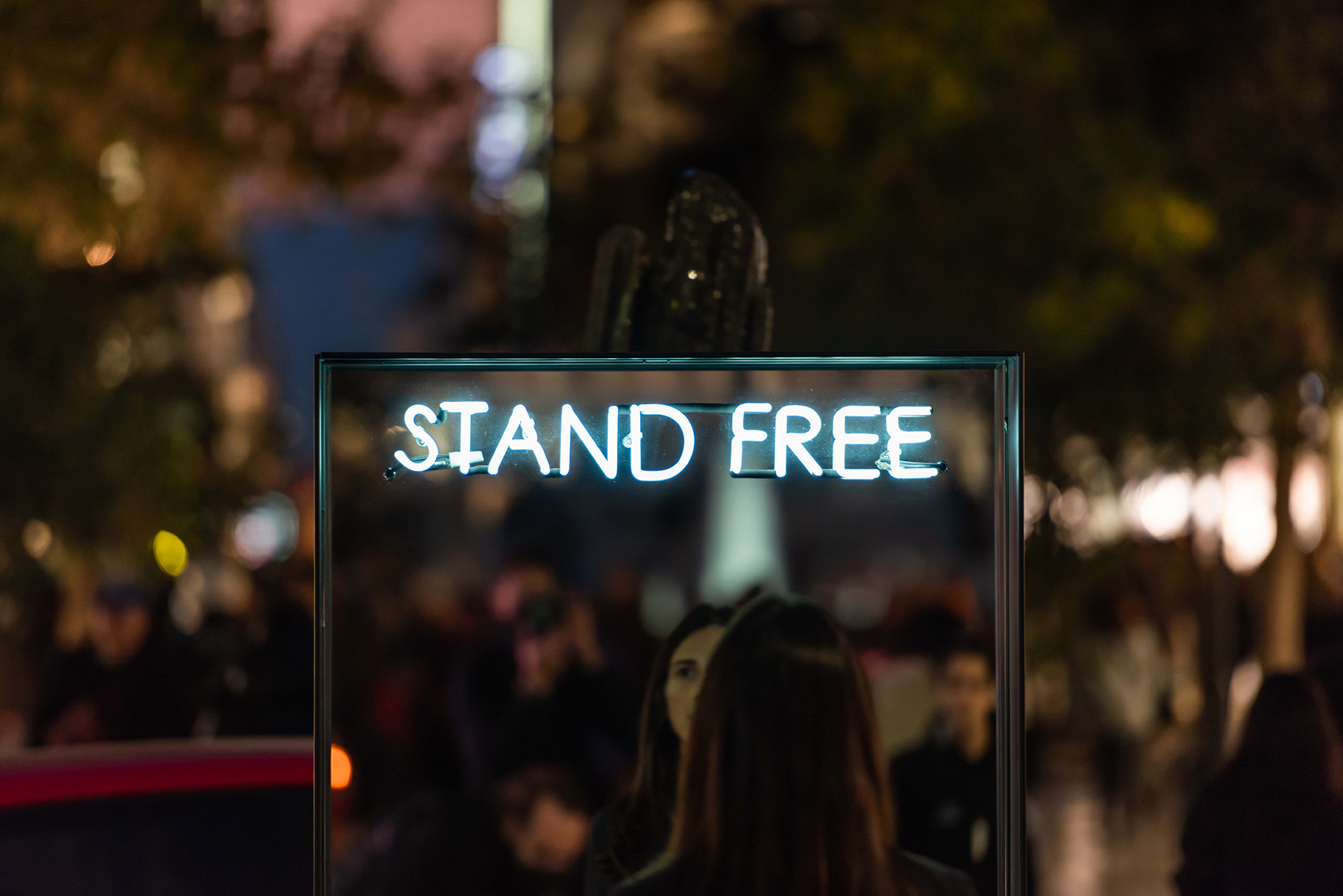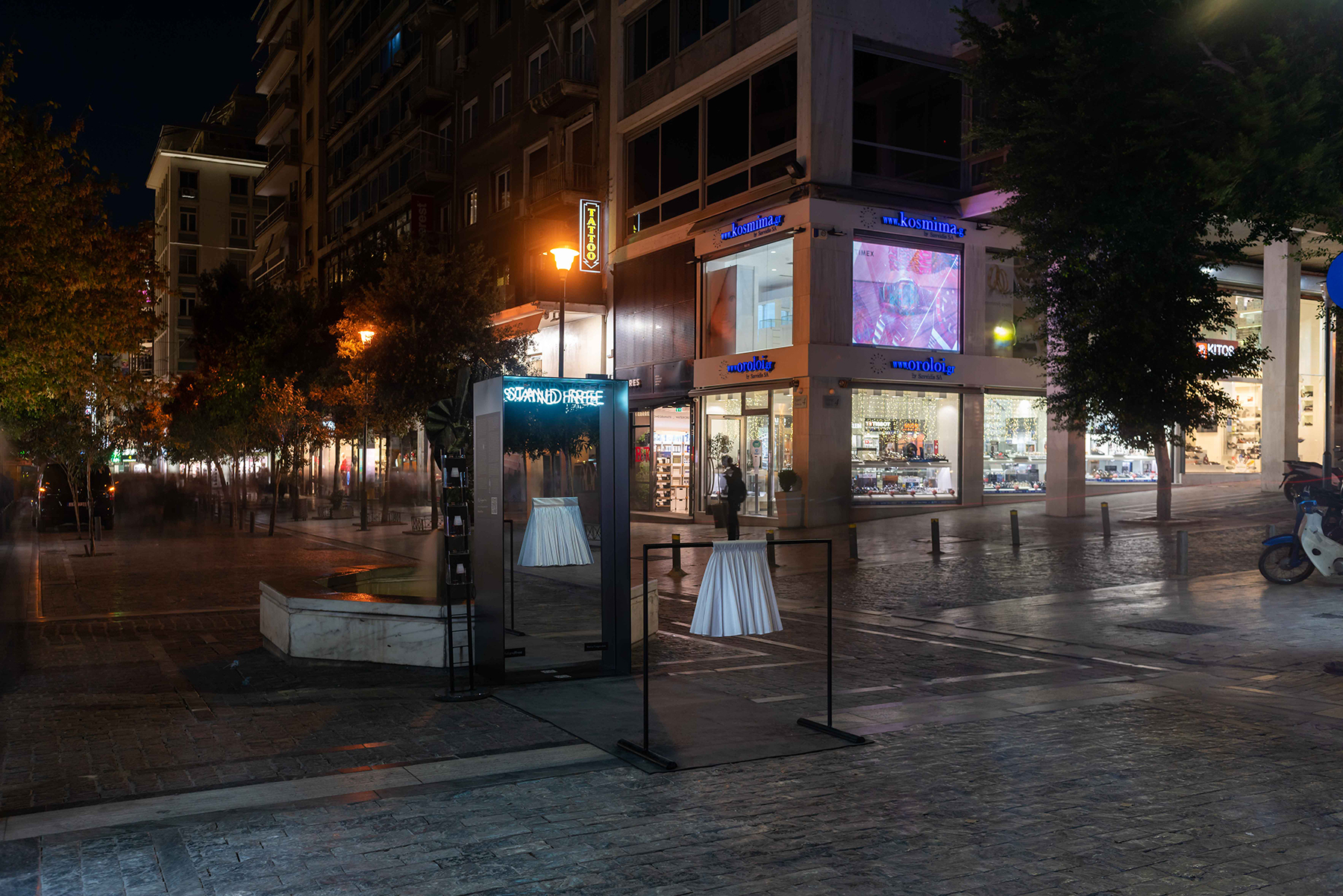Stand Free is an interactive installation by artist Maria Fragoudaki dedicated to the 200th anniversary of the Greek Revolution. After its three-month presence at Athens International Airport during the summer, it is relocated for a few days in November to Ermou street, close to Syntagma Square, under the auspices of the municipality of Athens.
The installation can be perceived as a visual game activated with the participation of the spectator. The installation “communicates” with the audience directly and unexpectedly by being placed in bustling public or private spaces. It holds a message of special importance which surpasses the anniversary, since it forms a challenge to the unsuspecting passerby spectator far bigger than watching themselves being projected on the reflective surface on which the “foustanela” is placed. Through the involuntarily reflection of themselves adorned with the foustanela, spectators are invited to reflect on contemporary reality and the way it has been shaped by the national awakening and the struggle of past generations. Especially for Greek viewers, the aim is to reflect upon the significance of freedom.
Though the image may at first seem lighthearted or even folkloric, it is at the same time familiar and strange. As viewers watch themselves wearing the foustanela over their clothes, they are prompted to reflect on the present day and on the shared identity and collective memory through the 200th anniversary of the Greek Revolution. The artist’s intention is not to instruct, but to remind the common past and values that have been inscribed on the collective unconscious of modern Greeks, values that once united them and led them to revolution, liberation and the foundation of the Greek state.
The foustanela, today worn exclusively by the Evzones –the presidential guard– establishes this connection. Although originally not a uniquely Greek garment, it now carries a special national and symbolic weight. The foustanela is sewn with 400 pleats, which symbolize the four centuries of Ottoman rule. The length of this traditional uniform is about 50 cm, though it can vary from 35 to 65 cm, while its white color represents the sacredness and purity of the liberation struggle. The Revolution of 1821 allowed the modern Greeks to stand “on their feet”. To Stand Free.
Beyond its association with the 1821 Revolution, the foustanela and the national uniform have served as symbols and calls to freedom for other peoples across different eras. In 1940, a photograph by Elly Sougioultzoglou-Seraidari (known as Nelly) depicting a bugler evzone and the Acropolis at the background appeared on the cover of LIFE magazine. It was then that the foustanela became an international symbol of resistance against any threat to freedom.
Maria Fragoudaki’s work, now installed at the most prominent commercial road of Athens, facing Syntagma square and the Greek Parliament, without any explanatory text or obvious historical references, captures the image of each passerby, regardless of nationality, gender or age. Through the mirror, the viewer can “appropriate” the national costume and feel either oppressed or liberated. The foustanela turns into a time capsule, connecting him or her with the past – whether their own or a foreign one.
Through the accompanying recorded message –accessible via QR code– the spectators are invited to converse with themselves and the environment. The installation activates lived experience, guiding the viewers to a condition that provokes affection, concern or simply amusement. The depth of this emotional involvement depends on the viewer’s perceptions, conscience, sensitivity and involvement with the history.
In the end, the work is completed through the participation and reactions of the viewer and the interactive nature of the project is materialized, allowing for its central message to be heard: Stand Free.
Katerina Koskina, International Curator & Museologist, November 2021




